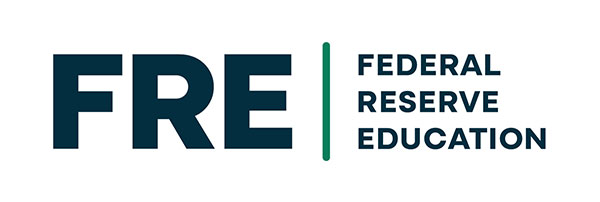How Economic Education Supports Monetary Policy
October is Economic Education Month, when we normally take a moment to emphasize how an understanding of core economic ideas such as scarcity, opportunity cost, and supply and demand provides the tools people need to make better decisions. This year we’re going to zoom out and explore the role economic education can play in supporting monetary policy.
The Federal Reserve’s Dual Mandate
Congress has given the Federal Reserve two goals for monetary policy: price stability and maximum employment. Through press conferences, speeches, media interviews and other means, the Fed makes sure the public is aware of its policy decisions and rationales for them. Ensuring that teachers, students and the public as a whole have access to resources that help them better understand policy decisions can increase the effectiveness of these communication efforts and of monetary policy.
Grounding Consumers’ Inflation Expectations
Monetary policy works through, or is transmitted by, the decisions of consumers and businesses.
Consider the economic concept of “inflation expectations.”
Inflation expectations are just what they sound like—expectations that households and businesses have about future inflation, as a July 2021 Page One Economics article explains. Inflation expectations are important because they influence people’s decision-making today, which then impacts future inflation.
For example, when people expect higher inflation, they might stock up on goods or buy sooner rather than later, which puts upward pressure on prices.
Now, let’s outline a scenario where gaps in the public’s understanding of economic principles can hinder monetary policy.
If inflation is higher than the Fed’s 2% inflation goal, the Federal Open Market Committee (FOMC) might vote to raise the target for the federal funds rate. The federal funds rate is the interest rate at which a depository institution like a bank lends money that is immediately available to another depository institution overnight.
The federal funds rate is the policy rate that the FOMC uses to set the stance of monetary policy. A higher federal funds rate would push other short-term interest rates higher, resulting in a decrease in spending, lower overall demand for goods and services in the economy, and lower inflation.
Transmission of Monetary Policy

SOURCE: Page One Economics article, “How Does the Fed Use Its Monetary Policy Tools to Influence the Economy?”
Monetary policy is transmitted through market interest rates to affect consumers’ and producers’ spending decisions, which ultimately moves the economy toward the Fed’s objectives—maximum employment and stable prices. This monetary policy implementation framework ensures that when the FOMC changes its policy stance (raises or lowers the target range for the federal funds rate), market interest rates and financial conditions move in the desired direction.
But surveys show a widespread misconception that inflation rises following increases in interest rates.See, for example, the November 2024 Journal of Monetary Economics article “People’s Understanding of Inflation” by Alberto Binetti, Francesco Nuzzi and Stefanie Stantcheva. In this example, that knowledge gap can affect inflation expectations, which influences decision-making and can hinder the Fed’s work to get inflation back to 2%. In this case, an improvement in economic literacy can improve economic policy outcomes.
Collective Commitment to Economic Education

Federal Reserve Education (FRE.org) is a free platform with economics and personal finance resources for classrooms and communities.
In a shared understanding of how critical economic literacy is to the economy, the Federal Reserve recently created Federal Reserve Education (FRE.org), a site that brings together hundreds of videos, lessons and infographics from the entire Federal Reserve System in a single location. It’s designed as a free resource for teachers, but it’s available to anyone looking for easy-to-understand resources on personal finance and economics.
So, whether you’re a teacher or a retiree on a fixed income, we hope you take a moment to explore resources that will give you the information you need to better understand how the Fed goes about fulfilling its mission. Because how you think about economics can shape the economy we experience together.
Note
- See, for example, the November 2024 Journal of Monetary Economics article “People’s Understanding of Inflation” by Alberto Binetti, Francesco Nuzzi and Stefanie Stantcheva.
This blog explains everyday economics and the Fed, while also spotlighting St. Louis Fed people and programs. Views expressed are not necessarily those of the St. Louis Fed or Federal Reserve System.
Email Us



